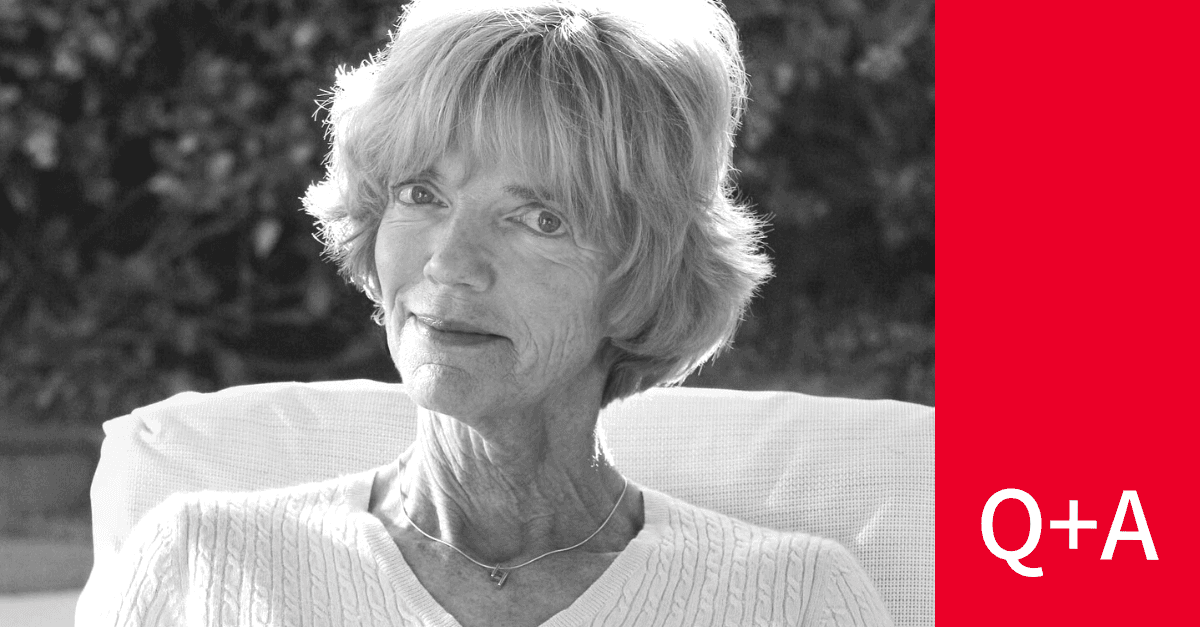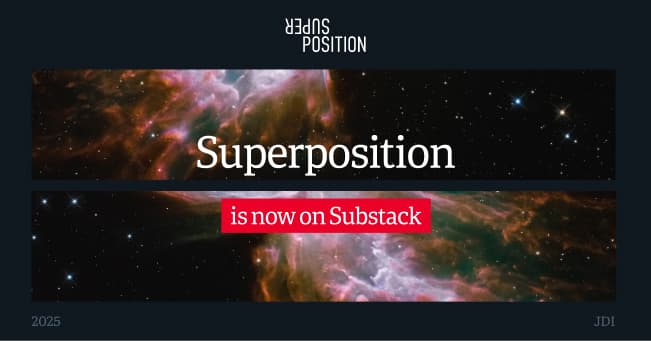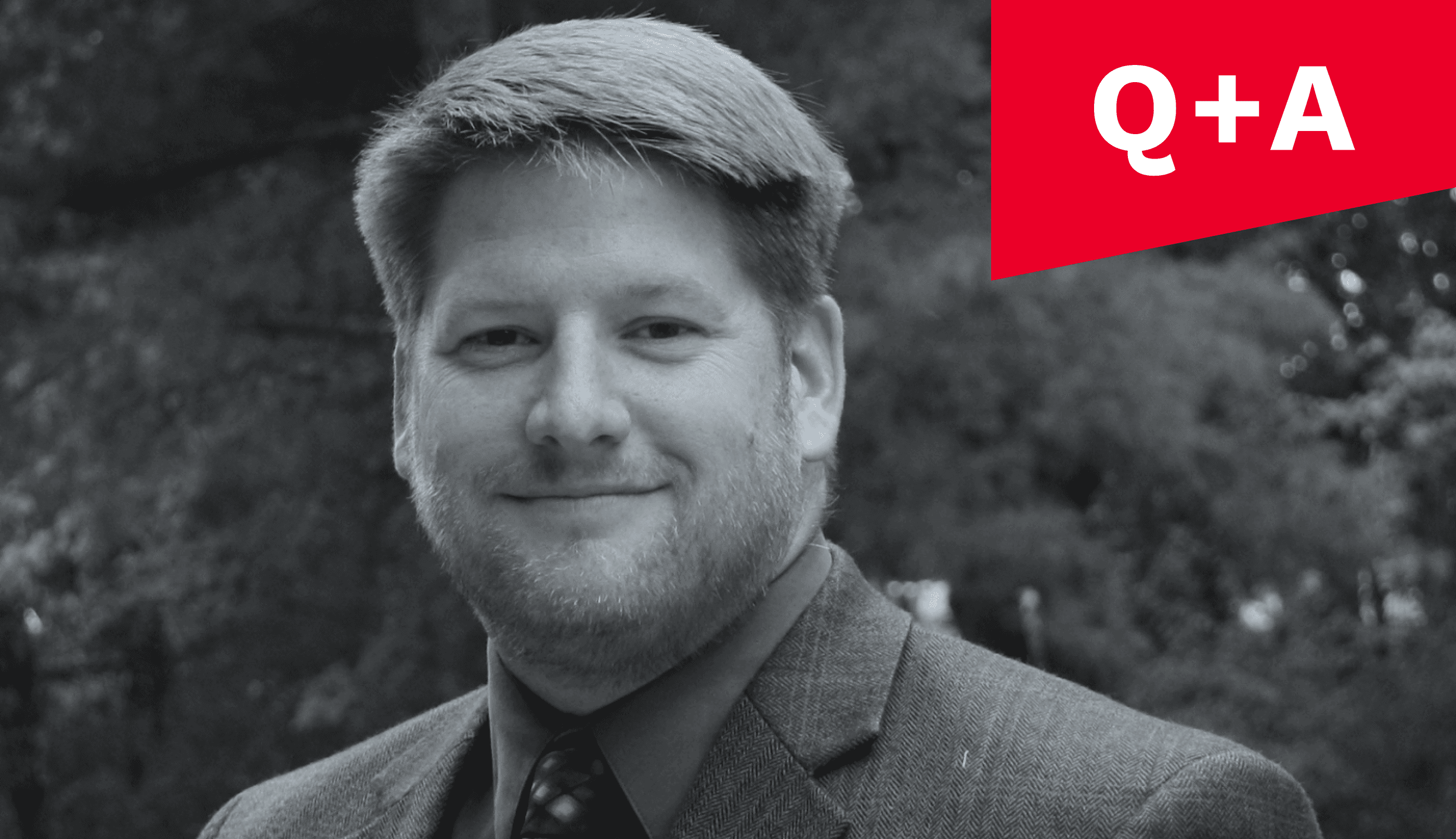Q&A with Dr. Patricia Churchland
Tell us about yourself– what is your background in and how did you end up in your current position?
I was born on a farm in the Okanagan valley of British Columbia, and the local village was where I went to school. It turned out to be a really very good place to grow up: I think a farm life requires a lot of practical skills. You come to realize the value of being able to do things practically and realistically.
When I graduated from high school, I went to the University of British Columbia as an undergraduate. I was very interested in what I thought was philosophy. That is to say, what the ancients such as Aristotle and Plato were asking. Their questions about the nature of the mind, how we remember, and how we make decisions. I thought that sounded quite interesting. It was not until I was a graduate student that I came to realize that philosophy as it currently is practiced is not really about the nature of phenomena or the nature of things. It was about the nature of words, and what people’s intuitions told them about what words could and couldn’t mean.
By the time I and my husband became junior professors at the University of Manitoba, we were both broadening our interests enormously. What we were working on began to encompass pretty much all of biology. We of course looked at evolutionary biology, but more particularly at neurobiology. When I was at the University of Manitoba, I went one day to the medical school and knocked on the office door of the head of anatomy. The reason was that I could not understand, from a 2D presentation, where one brain area connected to another brain area. He thought that this was terrific– a philosopher should know about the brain. He was an anatomist, and my introduction to this world changed my life. He invited me to come to the anatomy classes, along with the medical students, and also to attend clinical presentations of patients with brain damage. I was utterly fascinated by it all.
What is your definition of neurophilosophy and has it changed over time?
Initially, I thought of myself and my relation to what progress one may be able to make on grand-scale questions like, “How do humans make decisions?” or “How do humans remember things from the deep past?” I thought that I might be able to make progress on those questions by understanding more about the nature of the brain. Eventually, I was persuaded to call the endeavor — the overlap between the philosophical, grand scale questions and the neurobiology that might be relevant — I was persuaded to think of that as neurophilosophy.
It can be as open-ended as anybody wants: whether you’re interested in a very specific kind of decision or a very specific kind of memory. The focus lies in the neurobiological detail that’s relevant to how I remember where I parked my car, which is different from the details relevant to how it is that I can touch my nose. Performing an action is not the same as remembering what I ate for breakfast.
As a field of study that encompasses neuroscience, philosophy, and psychology, how have these three areas influenced one another historically and in recent decades?
At the time that I went to the University of Manitoba Medical School, philosophers, by and large, had absolutely no interest whatsoever in the brain. In some instances they were dualists, that is, they thought that mental phenomena were the phenomena of spooky stuff– they weren’t phenomena of the physical brain at all. The other aspect of this was that a number of philosophers had thought about the way computers are programmed.
This was long before artificial intelligence and neural nets, but the idea (Jerry Fodor, Daniel Dennett, for example) was that the way computers are programmed is probably the way the brain functions. Any given program can have diverse implementation details because what matters is not the stuff but the program. This school of thought was famously led by Daniel Dennett who thought the neurobiological details, such as how neurons are connected, were unimportant to understanding the mind. The important thing to understand is the program, not the implementation of physical stuff in which the program is instantiated.
Of course, it turned out that the brain is not at all like a digital computer; the brain does not have anything analogous to a program. The details of neuroscience really matter when we’re trying to understand something like the difference between feeling sad and feeling happy. Or the instantaneous decision to freeze, as opposed to choosing to run. The brain details matter, including the connectivity between neurons and the details of the protein channels on the neurons, not just the neurotransmitters, such as norepinephrine, we were all familiar with. Over the decades, studies grew to encompass the neuromodulators: serotonin, dopamine, and so forth.
I think I happened to be very lucky to not get sucked into the Marvin Minsky or Dan Dennett school of thought where the brain is essentially a computer with a program. Rather I was very taken by a very, very different picture that has to do with the actual importance of the biological details. The great strides that have been made in artificial intelligence in large-scale language models, for example, have been made with artificial neural networks. These artificial neural networks are not programmed: they learn by exposure to examples, and although how they learn is vastly simpler than how it appears that brains learn, they’re more like brains than a digital computer that has been programmed.
Unsupervised learning, of course, came later, and we now know that you can do even more with artificial nets than one would have ever imagined. Large language models (LLMs) such as Google’s LaMDA (language model for dialogue application) can carry on a reasonable conversation with many different experts, write short stories or poetry, and answer difficult questions as well as recognize nonsense questions. This leaves programming strategies in the dust, to put it mildly.
What are some of the greatest challenges of studying neurophilosophy?
The greatest challenge is to keep abreast of neurobiological developments. Neurobiology or, more broadly, perhaps neuroscience, is a vast field. There are so many bits and pieces to even a very simple brain, even the brain of C. Elegans, which is a nematode with only 302 neurons. Even that is not easy to understand, so keeping abreast of developments has, I think, been really difficult.
Sociologically, I think it was very gratifying for me to be warmly embraced, by and large, by neuroscientists or by biologists and general. Francis Crick, most notably, but also my long-term collaborator Terry Sejnowski. We were really engaged in the common search for answers to large-scale questions, but we weren’t even really sure they were very well posed questions, but we didn’t know how else to ask them.
Francis Crick used to come to tea time every day at Terry Sejnowski’s lab at the Salk Institute, and all of the graduate students and postdocs would come and have tea as well. We used to just have the most frank, knock-’em-down, drag-’em-out conversations imaginable! They were so much more substantive and exciting and fun than anything comparable in a philosophy seminar of the day. The topics ranged widely: from consciousness to spatial navigation to split brains.
Sociologically, mainstream philosophers hated what I did because they thought that they might have to learn some science, God forbid! Weren’t their intuitions good enough!? The answer, of course, is no they’re not good enough, they don’t even begin to be good enough. Our intuitions were not good enough to know what elements there are (not earth air fire and water) and they are not good enough to know what consciousness is. Needless to say, this perspective did not go well with most philosophers. On the other hand, there was a band of philosophers who were very encouraging and who saw that contemporary philosophy was making no progress — John Bickle, Steve Quartz, and Pete Mandik, for example.
The first book review that came out of my first book, Neurophilosophy (1986), came out in the Times Literary Supplement in England, and it was by the philosopher Colin McGinn. He couldn’t have been more vicious! In a certain sense, that kind of played into my hands– it means that you can have a lot of fun in your reply, which I did. He was the archetype of know-nothing philosophy.
What technologies and breakthroughs are you most interested in for neurophilosophy?
For any science to really develop depends on tools and techniques, and that’s certainly true of neuroscience. Electron microscopes gave a much better picture of neurons than conventional light microscopes. Across my career, it was very exciting to see the development of positron emission tomography and later magnetic research resonance imaging, but also the capacity to record from hundreds of individual neurons at the same time.
Early on in my career, I had the opportunity to have a PET scan for research purposes. I thought, “holy mackerel, I am going to get to see my own brain!” On a personal level, that was both eye-opening and fun. On a finer level, I think the work that Carl Deisseroth and others did to record many individual neurons at once in living tissue was probably more significant for research.
When you think about the human brain, it has 86 billion neurons — it’s quite a few! So if you’ve got 86 billion neurons, and you’re trying to record an area that is known to affect feelings of fear, your recording from one single cell likely will not tell you much. But using the technique whereby you could record not just from one, but from 100 or maybe 1000 cells at once? Deisseroth’s tool was a monumental advancement.
Terry Sejnowski and I still talk about some of these current kinds of conundra and how to address them, such as how some mammals and birds can be excellent problem solvers but have no language capacity. I often still go to tea and see what people at the Salk Institute are doing and what they’re thinking and what they’re puzzled about, such as how synapses change when we learn something.
How does evolution tie into neurophilosophy and the study of conscience?
First of all, what we might want to do is say something about what it is to have a conscience. Basically, it is to have the emotional responses and the motivational responses to help another. In the first analysis, the others that you want to help to thrive are your own children, beyond that, a mate, and beyond that, extended family and a community. In some primate lineages, and in some species such as hamadryas baboons, there are alpha females, where the alpha and her daughters all care most about each other as opposed to their mates. Much depends on where you direct your compassion and your willingness to help, and in a larger sense, the ecology of the ancestors that shaped your particular species.
The real nature of compassion and caring — the willingness to incur a cost to yourself, in order to evolve and help another — that really changed profoundly with endotherms or warm-blooded animals. After the great extinction of the dinosaurs about 65 million years ago, endotherms really thrived. It meant that you could forage at night, whereas the cold-blooded species had to wait for the sun to come up. Endotherms can forage in colder climates. The adaptation was truly revolutionary, but it does come at a cost. Very directly, gram for gram, an endotherm has to eat ten times as much as a cold-blooded animal. Energy demands put a huge constraint on how the endotherm is going to make a living.
The upshot seems to be that, one good way of making a living if you’re an endotherm is to be smart. That is to say, to have the behavioral capacity to be flexible, to respond to new conditions, not reflexively, but sizing them up, acting, evaluating, and adapting. But this too comes at a cost: if you’re going to be smart it really means that your smarts can’t all be built in, they have to be learned. If you’re going to learn, you have to build brain structure, you have to build new connectivity, new patterns of neural networks. For that to happen, mammals are born immature, so their brains can build on the basis of their experiences. Learning involves making new brain structures — new neuronal connections and branches. However, starting off without the capacity to see to your own survival does make you a nice target for all those cold-blooded animals.
If I may be poetic, Mother Nature said to herself, “Well, look, what am I going to do with these immature mammals and birds that will eventually be smart and independent? Well, we better have somebody to take care of them until they can take care of themselves.”
The mother is the closest, having just given birth, so the need to take care of the offspring had to be innate. A simplified way to understand this is that the mother views her offspring as an extension of herself: just as she would take care of her own needs and survival, she’d take care of the needs and survival of the offspring. With the advent of mammals, we saw the debut of this style of care. The system is far more complex than ones present in social cold-blooded species because it can be flexible and allows for decision-making. The bigger the brain, the greater the capacity to learn, adapt and solve new problems. This eventually led to primates, and now, to various hominin species.
Is AI being incorporated into the study of neurophilosophy? And if yes, how so?
Developments in AI and artificial neural nets are really, really important in expanding our ideas about how complex performances can be achieved by networks. From a neurobiological point of view, they help us to see what a large-scale system is capable of doing, even though it’s not quite the way that the brain does it. What we’d like to know, really, is whether there are principles and strategies that we can see in artificial neural networks that will help us understand the principles and strategies of learning in our brains.
However, we’ve found that brains are really very different from artificial neural networks. The cortex is only a little dinky part of our brain, I mean spatially speaking it’s quite a big part, but you know these other structures, the hypothalamus, the amygdala, the hippocampus, and the basal ganglia, these all bear the stamp of very ancient origins. An artificial neural network looks and functions a little bit like how we believe the cortex works. Yet if God gave you just an absolutely beautiful cortex, but none of the other stuff? You’re totally hosed! You can’t do much of anything — cannot swat a fly, for example.
Although as noted, LLMs are amazing in their capacity for sophisticated language use, AI networks so far can interact with the world only in a very rudimentary way. The robotic problem turns out to be more difficult than the language use problem (surprise there for philosophers, I suspect). Motor control is almost unimaginably difficult at the mechanistic level. Humans do it all the time — we scratch our noses, we run, we walk, we fish. We decide to swat a fly, and it happens. We think swatting a fly is easy, but it’s a supremely difficult computational problem. It’s important to work with people who are engaged in research on artificial neural networks and who also want to understand what basic principles can emerge from these structures.
Is there a specific event or point in your life that ignited your interest in science?
A very hard question to answer. Science is part of everyday life, as we deal with getting food, surviving, and socializing with other mammals. Why can my cousin not talk? How is it that I can talk? How does the smallpox vaccine prevent you from getting smallpox? Why do we sleep? Why do some people have difficulty going to sleep? Unless you are very detached from reality, you are bound to have an interest in science, thus broadly understood. You want to know why things happen because sometimes your life depends on it. If you’re a farmer with a cow and chickens and crops you’re trying to grow, you can’t not care about what is known about these things and you will want to learn more — from other farmers, from books, from the internet, and from your own experience. Learning how to make your cash crop flourish in the best way possible is borne from natural curiosity. Sometimes, if you are lucky enough to live now, you may be able to make progress on why we sleep or can talk by working in a lab. But the curiosity is borne from our basic curiosity about why things happen as they do in our everyday world.




